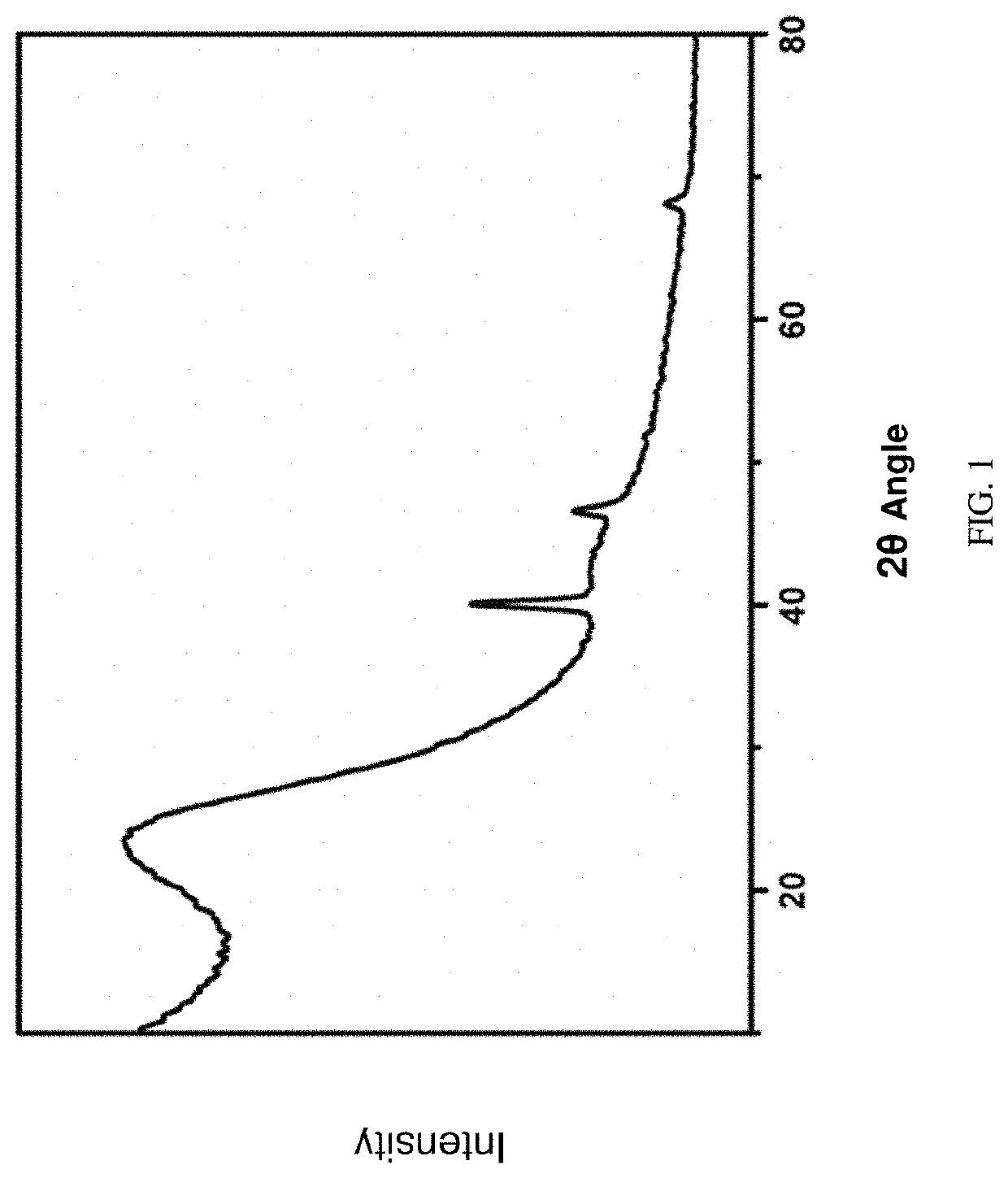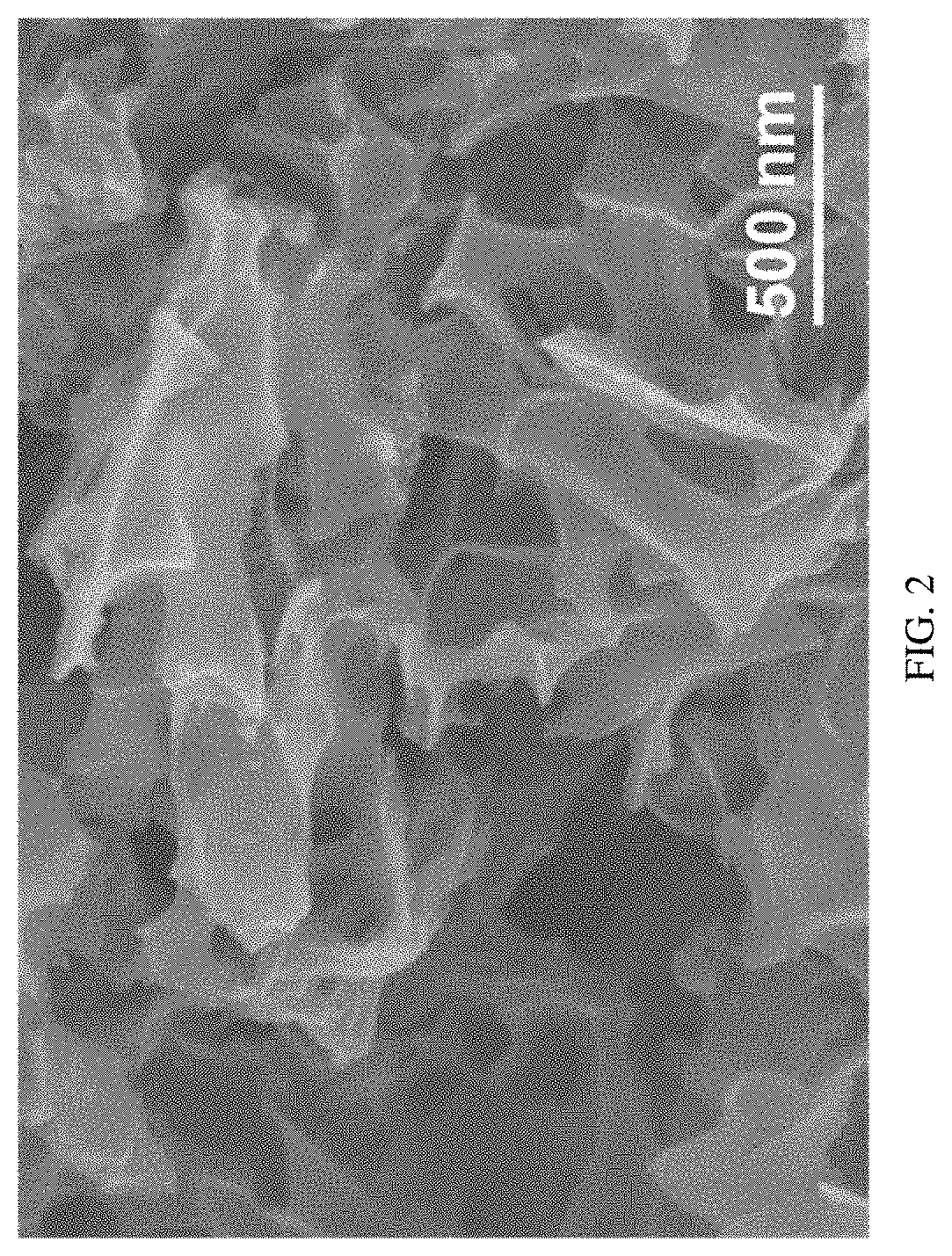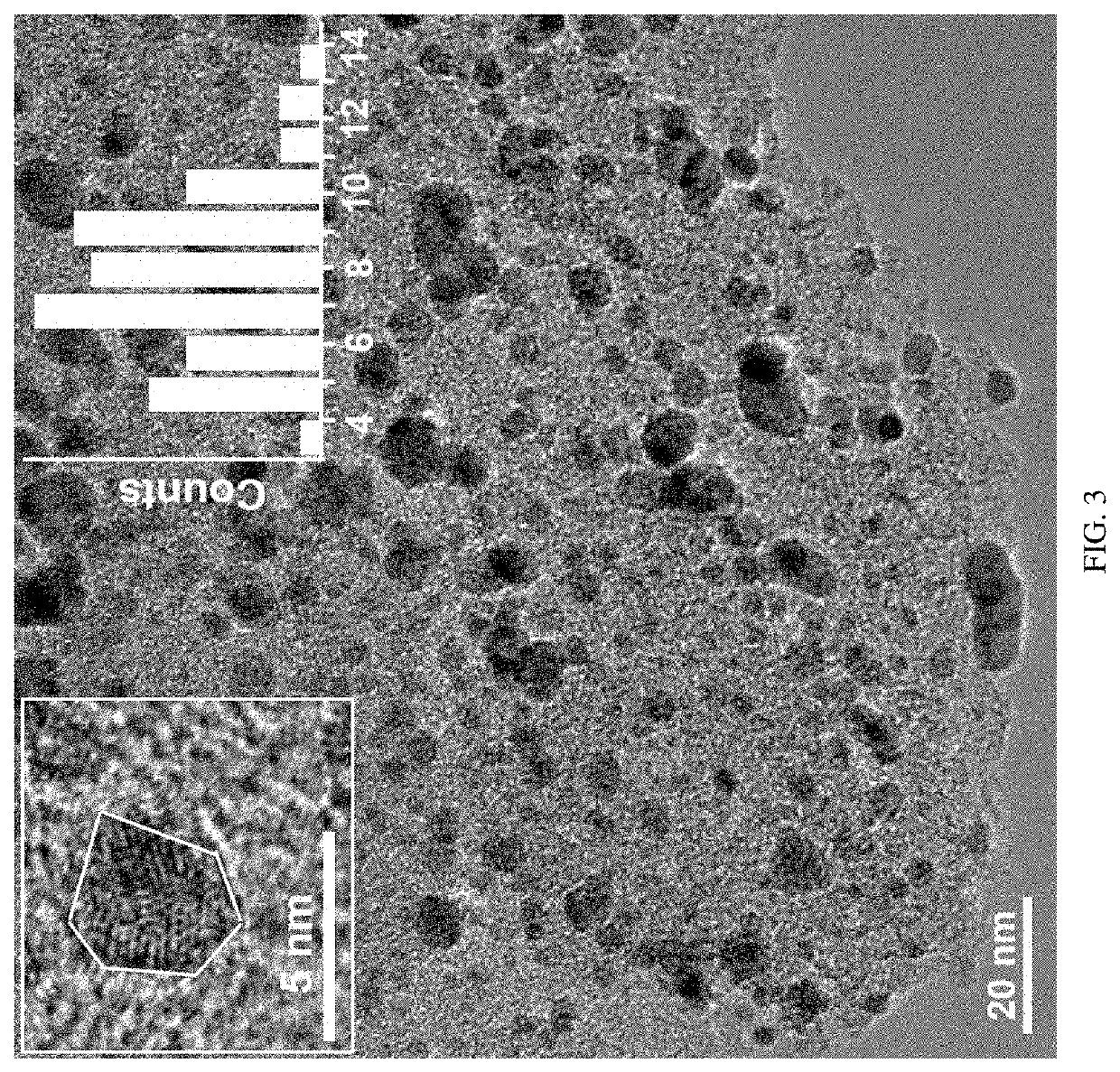Preparation method of nitrogen-doped hierarchical-porous carbon-loaded nanometer pd catalyst and product and application thereof
a pd catalyst and nitrogen-doped hierarchical porous technology, applied in the field of catalysts, can solve the problems of low activity, serious loss of active components, and traditional pd/ac catalysts, and achieve the effects of ultra-high conversion rate, selectivity and cycle stability
- Summary
- Abstract
- Description
- Claims
- Application Information
AI Technical Summary
Benefits of technology
Problems solved by technology
Method used
Image
Examples
example 1
[0062]4 g of cellulose, 12 g of sodium bicarbonate and 12 g of ammonium oxalate are weighed, mechanically mixed and transferred to a 30 mL crucible, and then calcined in a nitrogen furnace. The calcination step is as follows: heating up to 800° C. at 10° C. / min; calcining at 800° C. for 1 h; and then naturally cooling to room temperature. The calcined product is ground and mixed with deionized water, and then filtered after standing for 24 hours. The precipitate is then washed to neutrality, and dried to obtain a nitrogen-doped hierarchical-porous carbon material for later use.
[0063]1 g of nitrogen-doped hierarchical-porous carbon material is weighed, added to 60 mL of deionized water, stirred at room temperature, and slowly added with 100 mg / mL NaOH aqueous solution dropwise to adjust the pH value of the mixed solution to 10. 1 mL of 10 mg / mL PdCl2 aqueous solution is then added dropwise, and continuously stirred for 1 h at room temperature. 2 mL of 10 mg / mL formic acid aqueous sol...
example 2
[0066]1 g of nitrogen-doped hierarchical-porous carbon material prepared in Example 1 is weighed, added to 60 mL of deionized water, stirred at room temperature, and slowly added with 100 mg / mL NaOH aqueous solution dropwise to adjust the pH value of the mixed solution to 9. 1 mL of 10 mg / mL Pd(NO3)2 aqueous solution is then added dropwise, and continuously stirred for 1 h at room temperature. 2 mL of 15 mg / mL formic acid aqueous solution is added dropwise under stirring conditions, continuously stirred at room temperature for 1 h, filtered and washed to neutrality, to obtain a nitrogen-doped hierarchical-porous carbon-loaded nano-Pd catalyst.
[0067]In contrast to Example 1, the nitrogen-doped hierarchical-porous carbon-loaded nano-Pd catalyst prepared in this example is adjusted in the pH value of the mixed solution, the type of precursor salt, and the type and concentration of the reducing agent in the preparation process. The particle size of the Pd nanoparticles of the prepared c...
example 3
[0068]1 g of nitrogen-doped hierarchical-porous carbon material prepared in Example 1 is weighed, added to 60 mL of deionized water, stirred at room temperature, and slowly added with 100 mg / mL NaOH aqueous solution dropwise to adjust the pH value of the mixed solution to 10. 1 mL of 10 mg / mL Pd(NH3)4(NO3)2 aqueous solution is then added dropwise, and continuously stirred for 1 h at room temperature. 2 mL of 20 mg / mL sodium borohydride aqueous solution is added dropwise under stirring conditions, continuously stirred at room temperature for 1 h, filtered and washed to neutrality, to obtain a nitrogen-doped hierarchical-porous carbon-loaded nano-Pd catalyst.
[0069]In contrast to Example 1, the nitrogen-doped hierarchical-porous carbon-loaded nano-Pd catalyst prepared in this example is adjusted in the type of precursor salt, and the type and concentration of the reducing agent in the preparation process. The particle size of the Pd nanoparticles of the prepared catalyst conforms to th...
PUM
| Property | Measurement | Unit |
|---|---|---|
| concentration | aaaaa | aaaaa |
| particle size | aaaaa | aaaaa |
| mass fraction | aaaaa | aaaaa |
Abstract
Description
Claims
Application Information
 Login to View More
Login to View More - R&D
- Intellectual Property
- Life Sciences
- Materials
- Tech Scout
- Unparalleled Data Quality
- Higher Quality Content
- 60% Fewer Hallucinations
Browse by: Latest US Patents, China's latest patents, Technical Efficacy Thesaurus, Application Domain, Technology Topic, Popular Technical Reports.
© 2025 PatSnap. All rights reserved.Legal|Privacy policy|Modern Slavery Act Transparency Statement|Sitemap|About US| Contact US: help@patsnap.com



